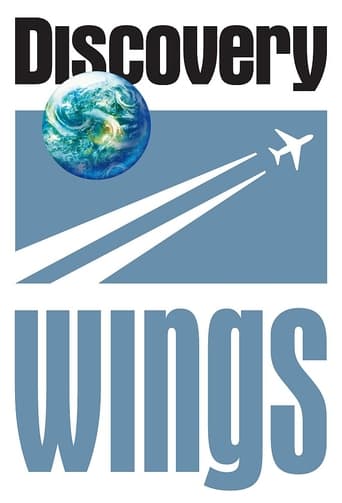
Trailer
Synopsis
Great Planes was the original subset of Wings episodes which focused on one particular aircraft type. The original Great Planes program was initially produced by Aviation Video International in Australia, and distributed by the Discovery Channel. When it initially aired in America, the majority of episodes were narrated by the program's Australian writer and director, Luke Swann, with some others written and narrated by John Honey and Phil Chugg. In 1991 (notably following the first Gulf War), episodes were re-edited to include interviews with pilots of the profiled aircraft types before and following commercial breaks, and the narration was re-dubbed with American narrators Ron David and Tom Hair.
Episode 39 : Vought F4U Corsair
December. 28,1988
The Vought F4U Corsair is an American fighter aircraft which saw service primarily in World War II and the Korean War. It was designed and operated as a carrier-based aircraft, and entered service in large numbers with the U.S. Navy in late 1944 and early 1945. It quickly became one of the most capable carrier-based fighter-bombers of World War II.
Episode 38 : Vought A-7 Corsair II
December. 21,1988
The LTV A-7 Corsair II is an American carrier-capable subsonic light attack aircraft designed and manufactured by Ling-Temco-Vought (LTV).
The A-7 was developed during the early 1960s as replacement for the Douglas A-4 Skyhawk. Its design was derived from the Vought F-8 Crusader; in comparison with the F-8, the A-7 is both smaller and restricted to subsonic speeds, its airframe being simpler and cheaper to produce. Following a competitive bid by Vought in response to the United States Navy's (USN) VAL (Heavier-than-air, Attack, Light) requirement, an initial contract for the type was issued on 8 February 1964. Development was rapid, first flying on 26 September 1965 and entering squadron service with the USN on 1 February 1967; by the end of that year, A-7s were being deployed overseas for the Vietnam War.
Episode 37 : Rockwell B-1 Lancer
December. 14,1988
The Rockwell B-1 Lancer is a supersonic variable-sweep wing, heavy bomber used by the United States Air Force. It is commonly called the "Bone" (from "B-One").
Episode 36 : Republic P-47 Thunderbolt
December. 07,1988
The Republic P-47 Thunderbolt is a World War II-era fighter aircraft produced by the American aerospace company Republic Aviation from 1941 through 1945. Its primary armament was eight .50-caliber machine guns, and in the fighter-bomber ground-attack role it could carry 5-inch rockets or a bomb load of 2,500 lb (1,100 kg). When fully loaded, the P-47 weighed up to 8 tons, making it one of the heaviest fighters of the war.
Episode 35 : Republic F-105 Thunderchief
November. 30,1988
The Republic F-105 Thunderchief is an American supersonic fighter-bomber used by the United States Air Force. Capable of Mach 2, it conducted the majority of strike bombing missions during the early years of the Vietnam War; it was the only American aircraft to have been removed from combat due to high loss rates. It was originally designed as a single-seat, nuclear-attack aircraft; a two-seat Wild Weasel version was later developed for the specialized Suppression of Enemy Air Defenses (SEAD) role against surface-to-air missile sites. The F-105 was commonly known as the "Thud" by its crews.
Episode 34 : Republic F-84 Thunderjet
November. 23,1988
The Republic F-84 Thunderjet was an American turbojet fighter-bomber aircraft. Originating as a 1944 United States Army Air Forces (USAAF) proposal for a "day fighter", the F-84 first flew in 1946.
The Thunderjet became the USAF's primary strike aircraft during the Korean War, flying 86,408 sorties and destroying 60% of all ground targets in the war as well as eight Soviet-built MiG fighters. Over half of the 7,524 F-84s produced served with NATO nations, and it was the first aircraft to fly with the U.S. Air Force Thunderbirds demonstration team. The USAF Strategic Air Command had F-84 Thunderjets in service from 1948 through 1957.
Episode 33 : Northrop F-5 Freedom Fighter
November. 16,1988
The Northrop F-5 is a family of supersonic light fighter aircraft initially designed as a privately funded project in the late 1950s by Northrop Corporation. There are two main models, the original F-5A and F-5B Freedom Fighter variants and the extensively updated F-5E and F-5F Tiger II variants.
Smaller and simpler than contemporaries such as the McDonnell Douglas F-4 Phantom II, the F-5 cost less to procure and operate, making it a popular export aircraft. Though primarily designed for a day air superiority role, the aircraft is also a capable ground-attack platform. The F-5A entered service in the early 1960s. During the Cold War, over 800 were produced through 1972 for U.S. allies. Though at the time the United States Air Force (USAF) did not have a need for a light fighter, it did procure approximately 1,200 Northrop T-38 Talon trainer aircraft, which was based on Northrop's N-156 fighter design.
Episode 32 : North American XB-70 Valkyrie
November. 09,1988
The North American Aviation XB-70 Valkyrie was the prototype version of the planned B-70 nuclear-armed, deep-penetration supersonic strategic bomber for the United States Air Force Strategic Air Command. Designed in the late 1950s by North American Aviation (NAA), the six-engined Valkyrie was capable of cruising for thousands of miles at Mach 3+ while flying at 70,000 feet (21,000 m).
Episode 31 : North American P-51 Mustang
November. 02,1988
The North American Aviation P-51 Mustang is an American long-range, single-seat fighter and fighter-bomber used during World War II and the Korean War, among other conflicts.
The P-51 was used by Allied air forces in the North African, Mediterranean, Italian, and Pacific theaters. During World War II, Mustang pilots claimed to have destroyed 4,950 enemy aircraft.
Episode 30 : North American F-100 Super Sabre
October. 26,1988
The North American F-100 Super Sabre is an American supersonic jet fighter aircraft that served with the United States Air Force (USAF) from 1954 to 1971 and with the Air National Guard (ANG) until 1979. The first of the Century Series of USAF jet fighters, it was the first USAF fighter capable of supersonic speed in level flight. The F‑100 was designed by North American Aviation as a higher-performance follow-on to the F-86 Sabre air-superiority fighter. Adapted as a fighter-bomber, the F-100 was superseded by the high-speed Republic F-105 Thunderchief for strike missions over North Vietnam. The F‑100 flew extensively over South Vietnam as the air force's primary close air-support jet until being replaced by the more efficient subsonic LTV A-7 Corsair II.
Episode 29 : North American F-86 Sabre
October. 19,1988
The North American F-86 Sabre, sometimes called the Sabrejet, is a transonic jet fighter aircraft. Produced by North American Aviation, the Sabre is best known as the United States' first swept-wing fighter that could counter the swept-wing Soviet MiG-15 in high-speed dogfights in the skies of the Korean War (1950–1953), fighting some of the earliest jet-to-jet battles in history. Considered one of the best and most important fighter aircraft in that war, the F-86 is also rated highly in comparison with fighters of other eras. Although it was developed in the late 1940s and was outdated by the end of the 1950s, the Sabre proved versatile and adaptable and continued as a front-line fighter in numerous air forces.
Episode 28 : North American B-25 Mitchell
October. 12,1988
The North American B-25 Mitchell is an American medium bomber that was introduced in 1941 and named in honor of Major General William "Billy" Mitchell, a pioneer of U.S. military aviation. Used by many Allied air forces, the B-25 served in every theater of World War II, and after the war ended, many remained in service, operating across four decades.
Episode 27 : McDonnell Douglas F/A-18 Hornet
October. 05,1988
The McDonnell Douglas F/A-18 Hornet is a twin-engine, supersonic, all-weather, carrier-capable, multirole combat jet, designed as both a fighter and attack aircraft (hence the F/A designation). Designed by McDonnell Douglas (now part of Boeing) and Northrop (now part of Northrop Grumman), the F/A-18 was derived from the latter's YF-17 in the 1970s for use by the United States Navy and Marine Corps. The Hornet is also used by the air forces of several other nations, and by the U.S. Navy's Flight Demonstration Squadron, the Blue Angels.
Designed to be a highly versatile aircraft due to its avionics, cockpit displays, and excellent aerodynamic characteristics, with the ability to carry a wide variety of weapons, the aircraft can perform fighter escort, fleet air defense, suppression of enemy air defenses, air interdiction, close air support, and aerial reconnaissance. Its versatility and reliability have proven it to be a valuable carrier asset.
Episode 26 : McDonnell Douglas F-15 Eagle
September. 28,1988
The McDonnell Douglas F-15 Eagle is an American twin-engine, all-weather tactical fighter aircraft designed by McDonnell Douglas (now part of Boeing). The Eagle first flew in July 1972 and entered service in 1976. It is among the most successful modern fighters, with over 100 victories and no losses in aerial combat, with the majority of the kills by the Israeli Air Force.
The aircraft design proved flexible enough that an improved all-weather strike derivative, the F-15E Strike Eagle, was later developed, entered service in 1989 and has been exported to several nations.
Episode 25 : McDonnell Douglas F-4 Phantom II
September. 21,1988
The McDonnell Douglas F-4 Phantom II is an American tandem two-seat, twin-engine, all-weather, long-range supersonic jet interceptor and fighter-bomber originally developed by McDonnell Aircraft for the United States Navy.
The F-4 was used extensively during the Vietnam War. It served as the principal air superiority fighter for the U.S. Air Force, Navy, and Marine Corps and became important in the ground-attack and aerial reconnaissance roles late in the war.
Episode 24 : Martin B-57 Canberra
September. 14,1988
The Martin B-57 Canberra is an American-built, twin-engined tactical bomber and reconnaissance aircraft that entered service with the United States Air Force (USAF) in 1953.
Used extensively during the Vietnam War, The B-57 Canberra holds the distinction of being the first jet bomber in U.S. service to drop bombs during combat.
Episode 23 : Martin B-26 Marauder
September. 07,1988
The Martin B-26 Marauder is an American twin-engined medium bomber that saw extensive service during World War II. The B-26 was built at two locations: Baltimore, Maryland, and Omaha, Nebraska, by the Glenn L. Martin Company.
First used in the Pacific Theater of World War II in early 1942, it was also used in the Mediterranean Theater and in Western Europe.
Episode 22 : Lockheed SR-71 Blackbird
August. 31,1988
The Lockheed SR-71 "Blackbird" is a long-range, high-altitude, Mach 3+ strategic reconnaissance aircraft developed and manufactured by the American aerospace company Lockheed Corporation. It was operated by both the United States Air Force (USAF) and NASA.
It was developed as a black project from the Lockheed A-12 reconnaissance aircraft during the 1960s by Lockheed's Skunk Works division.
Episode 21 : Lockheed P-38 Lightning
August. 24,1988
The Lockheed P-38 Lightning is an American single-seated, twin piston-engined fighter aircraft that was used during World War II. Developed for the United States Army Air Corps by the Lockheed Corporation, the P-38 incorporated a distinctive twin-boom design with a central nacelle containing the cockpit and armament. Along with its use as a general fighter, the P-38 was used in various aerial combat roles, including as a highly effective fighter-bomber, a night fighter, and a long-range escort fighter when equipped with drop tanks.
Episode 20 : Lockheed F-104 Starfighter
August. 17,1988
The Lockheed F-104 Starfighter is a single-engine, supersonic interceptor aircraft which was extensively deployed as a fighter-bomber during the Cold War. Created as a day fighter by Lockheed as one of the Century Series of fighter aircraft for the United States Air Force (USAF), it was developed into an all-weather multirole aircraft in the early 1960s and produced by several other nations, seeing widespread service outside the United States.
Episode 19 : Lockheed C-130 Hercules
August. 10,1988
The Lockheed C-130 Hercules is an American four-engine turboprop military transport aircraft designed and built originally by Lockheed (now Lockheed Martin). Capable of using unprepared runways for takeoffs and landings, the C-130 was originally designed as a troop, medevac, and cargo transport aircraft. The versatile airframe has found uses in a variety of other roles, including as a gunship (AC-130), for airborne assault, search and rescue, scientific research support, weather reconnaissance, aerial refueling, maritime patrol, and aerial firefighting. It is now the main tactical airlifter for many military forces worldwide.
Episode 18 : Lockheed Constellation
August. 03,1988
The Lockheed Constellation ("Connie") is a propeller-driven, four-engined airliner built by Lockheed Corporation starting in 1943. The Constellation series was the first pressurized-cabin civil airliner series to go into widespread use. Its pressurized cabin enabled commercial passengers to fly well above most bad weather for the first time, thus significantly improving the general safety and ease of air travel.
Episode 17 : Grumman F4F Wildcat/F6F Hellcat
July. 27,1988
The Grumman F4F Wildcat is an American carrier-based fighter aircraft that entered service in 1940 with the United States Navy.
The Grumman F6F Hellcat is an American carrier-based fighter aircraft of World War II. Designed to replace the earlier F4F Wildcat and to counter the Japanese Mitsubishi A6M Zero, it was the United States Navy's dominant fighter in the second half of the Pacific War.
Episode 16 : Grumman F-14 Tomcat
July. 20,1988
The Grumman F-14 Tomcat is an American carrier-capable supersonic, twin-engine, two-seat, twin-tail, variable-sweep wing fighter aircraft. First flown on 21 December 1970, the F-14 served as the U.S. Navy's primary maritime air superiority fighter, fleet defense interceptor, and tactical aerial reconnaissance platform into the 2000s.
Episode 15 : General Dynamics F-111 Aardvark
July. 13,1988
The General Dynamics F-111 Aardvark is a retired supersonic, medium-range, multirole combat aircraft. Production variants of the F-111 had roles that included ground attack (e.g. interdiction), strategic bombing (including nuclear weapons capabilities), reconnaissance and electronic warfare.
Episode 14 : General Dynamics F-16 Fighting Falcon
July. 06,1988
The General Dynamics F-16 Fighting Falcon (referred to as the "Viper" by its crew) is a single-engine multirole fighter aircraft originally developed by General Dynamics for the United States Air Force (USAF). Designed as an air superiority day fighter, it evolved into a successful all-weather multirole aircraft.
Episode 13 : Douglas C-47 Dakota
June. 29,1988
The Douglas C-47 Skytrain or Dakota is a military transport aircraft developed from the civilian Douglas DC-3 airliner. It was used extensively by the Allies during World War II and remained in front-line service with various military operators for many years.
Episode 12 : Douglas A-26 Invader
June. 22,1988
The Douglas A-26 Invader (designated B-26 between 1948 and 1965) is an American twin-engined light bomber and ground attack aircraft. Built by Douglas Aircraft Company during World War II, the Invader also saw service during several major Cold War conflicts.
Episode 11 : Douglas A-4 Skyhawk
June. 15,1988
The Douglas A-4 Skyhawk is a single-seat subsonic carrier-capable light attack aircraft developed for the United States Navy and United States Marine Corps in the early 1950s. The delta-winged, single turbojet engined Skyhawk was designed and produced by Douglas Aircraft Company, and later by McDonnell Douglas.
Episode 10 : Douglas A-1 Skyraider
June. 08,1988
The Douglas A-1 Skyraider (formerly known as AD Skyraider) is an American single-seat attack aircraft in service from 1946 to the early 1980s. The Skyraider had a remarkably long and successful career; it became a piston-engined anachronism in the jet age, and was nicknamed "Spad", after the French World War I fighter.
Episode 9 : Convair B-36 Peacemaker
June. 01,1988
The Convair B-36 "Peacemaker" is a strategic bomber built by Convair and operated by the United States Air Force (USAF) from 1949 to 1959. The B-36 is the largest mass-produced piston-engined aircraft ever built.
Episode 8 : Consolidated PBY Catalina
May. 25,1988
The Consolidated PBY Catalina is a flying boat and amphibious aircraft that was produced in the 1930s and 1940s. It was one of the most widely used seaplanes of World War II. Catalinas served with every branch of the United States Armed Forces and in the air forces and navies of many other nations.
Episode 7 : Consolidated B-24 Liberator
May. 18,1988
The B-24 was used extensively in World War II. It served in every branch of the American armed forces as well as several Allied air forces and navies. It saw use in every theater of operations. Along with the B-17, the B-24 was the mainstay of the US strategic bombing campaign in the Western European theater.
Episode 6 : British Aerospace/McDonnell Douglas Harrier
May. 11,1988
The Harrier, informally referred to as the Harrier Jump Jet, is a family of jet-powered attack aircraft capable of vertical/short takeoff and landing operations (V/STOL).
Episode 5 : Boeing B-52 Stratofortress
May. 04,1988
The Boeing B-52 Stratofortress (also known as the "BUFF") is an American long-range, subsonic, jet-powered strategic bomber. The B-52 was designed and built by Boeing, which has continued to provide support and upgrades. It has been operated by the United States Air Force (USAF) since the 1950s.
Episode 4 : Boeing B-29 Superfortress
April. 27,1988
The Boeing B-29 Superfortress is an American four-engined propeller-driven heavy bomber designed by Boeing and flown primarily by the United States during World War II and the Korean War. One of the largest aircraft of World War II, the B-29 had state-of-the-art technology, including a pressurized cabin, dual-wheeled, tricycle landing gear, and an analog computer-controlled fire-control system that allowed one gunner and a fire-control officer to direct four remote machine gun turrets.
Episode 3 : Boeing B-17 Flying Fortress
April. 20,1988
The Boeing B-17 Flying Fortress is a four-engined heavy bomber developed in the 1930s for the United States Army Air Corps (USAAC). It was primarily employed by the USAAF in the daylight strategic bombing campaign of World War II against German industrial, military and civilian targets.
Episode 2 : Boeing 747
April. 13,1988
The Boeing 747 is a large, long-range wide-body airliner designed and manufactured by Boeing Commercial Airplanes in the United States. After introducing the 707 in October 1958, Pan Am wanted a jet 2 1⁄2 times its size. With a ten-abreast economy seating, it typically accommodates 366 passengers in three travel classes.
Episode 1 : Boeing 707
April. 06,1988
The Boeing 707 is an American long-range narrow-body airliner that was developed and produced by Boeing Commercial Airplanes, its first jetliner. Developed from the Boeing 367-80, a prototype first flown in 1954, the initial 707-120 first flew on December 20, 1957.
Seasons

Season 9
First seeing service in the First World War, flying boats quickly adapted to peacetime when they became the world's first airliners. When the Second World War broke out, flying boats swiftly reverted to their military roles in both the Atlantic and Pacific theaters - but it was becoming increasingly obvious that their days were numbered. Discovery Wings tells the story of these beautiful and spectacular aircraft with rare action archive footage and stills featuring dozens of different designs.
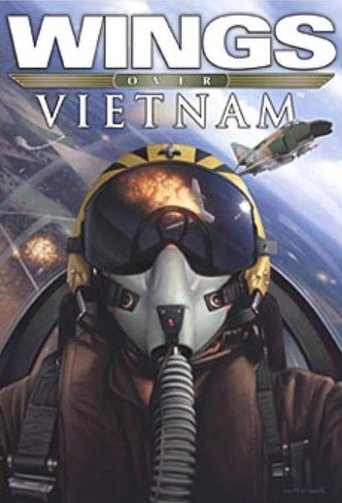
Season 8
In 2002, this eight-episode program was aired, hosted by David Scott.
During the course of the Southeast Asian war, the United States developed many new types of air tactics that had never previously been needed. New missions were devised, often under bizarre code-names. Some of these missions have gone on to become legends, while others have simply faded. What does remain are the men who flew the missions, the planes that were involved, and incredible stories of determination, triumph and tragedy. Wings Over Vietnam compares rare combat footage with first-hand accounts, to create a captivating portrait of these unique missions.

Season 7
Starting in the mid 1990s, newer Wings episodes, sometimes referred to as Wings II, would focus on the history or operations of a particular foreign air force, such as the Israeli Air Force, a foreign aviation company or design bureau such as France's Dassault or Russia's Mikoyan, or the aircraft of a particular conflict such as the Korean War or the Afghan-Soviet War. These episodes, narrated by Stuart Culpepper, often had interviews with the aircrews and famed aviation historian/writer Jeffrey Ethell, the "Fighter Writer".
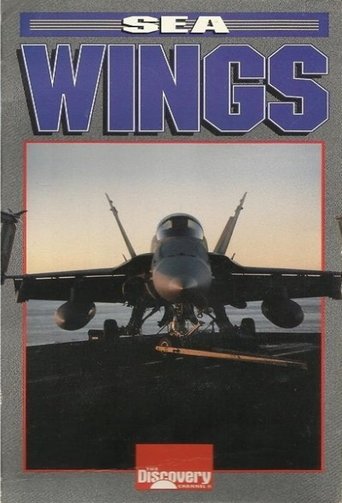
Season 6
SeaWings, narrated by Edward Easton, was a separately-branded program that focused on United States (and some foreign) naval aircraft from World War II to the present day.
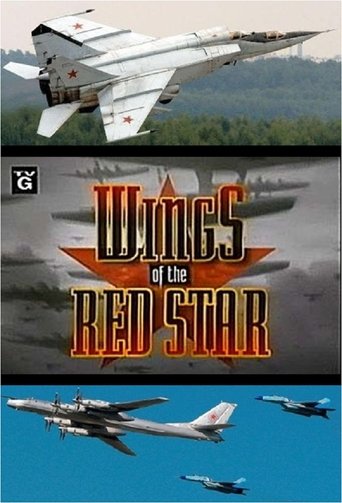
Season 5
Wings of the Red Star was a separately-branded program that focused on Soviet Air Force aircraft from World War II to the modern era. It was narrated by actor Sir Peter Ustinov.

Season 4
Wings of the Luftwaffe was a 1992 separately-branded program that focused on Luftwaffe aircraft of World War II. It was narrated by Helmut Bakaitis.
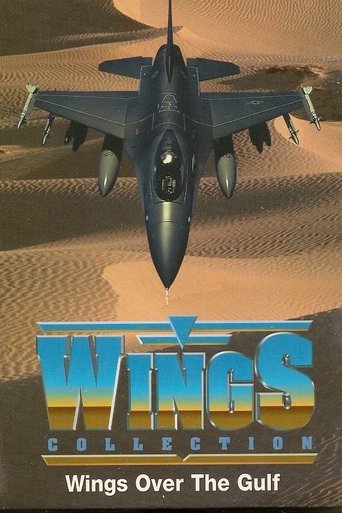
Season 3
Following the Gulf War of 1991, Discovery produced a new short-run program, Wings Over the Gulf, profiling the air war over Iraq before and during Operation Desert Storm, and select aircraft types used by coalition forces. The program was narrated by Will Lyman, and was released on VHS.
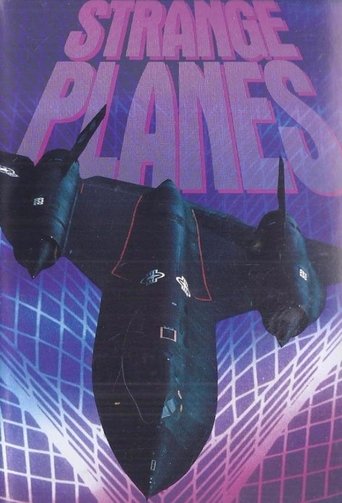
Season 2
A series of six episodes, entitled Strange Planes (and later released on VHS video), focused on several unusual aircraft types.
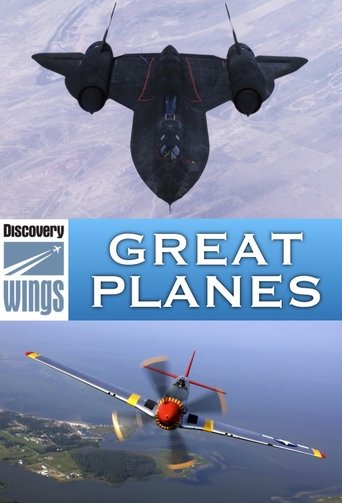
Season 1
Great Planes was the original subset of Wings episodes which focused on one particular aircraft type. The original Great Planes program was initially produced by Aviation Video International in Australia, and distributed by the Discovery Channel.
When it initially aired in America, the majority of episodes were narrated by the program's Australian writer and director, Luke Swann, with some others written and narrated by John Honey and Phil Chugg. In 1991 (notably following the first Gulf War), episodes were re-edited to include interviews with pilots of the profiled aircraft types before and following commercial breaks, and the narration was re-dubbed with American narrators Ron David and Tom Hair.
Similar titles
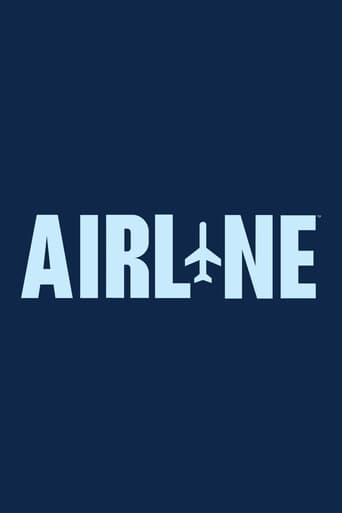
Airline
Airline is an American reality television series that showcases the daily happenings of passengers, ground workers and on-board staff members of Southwest Airlines. The series debuted on January 5, 2004 on A&E and ran for three seasons.
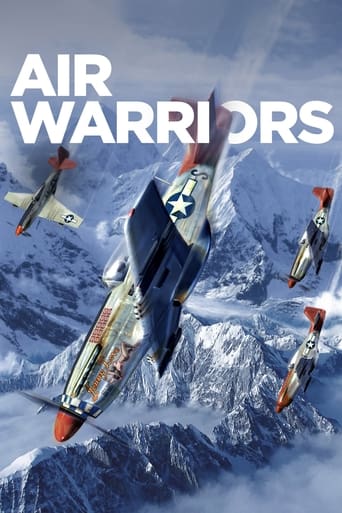
Air Warriors
They are the high-flying pride of the U.S. military, one-of-a-kind warriors that, over the decades, collectively revolutionized aerial warfare. Through rare, archival footage and compelling testimonies, meet the men and women who fly and maintain these Air Warriors and see how they've overcome incredible obstacles to rule the sky.
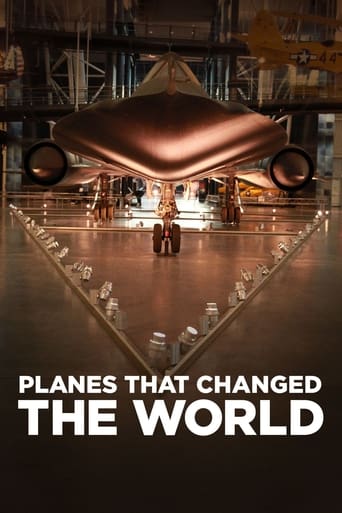
Planes That Changed the World
This new series features the fascinating stories of three of the most important commercial aircraft ever to take to the skies.
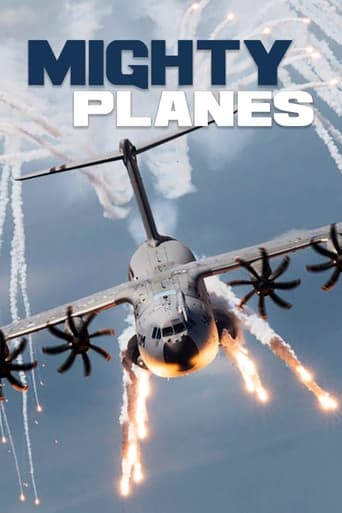
Prime Video
Mighty Planes
Mighty Planes explores the art and science of aviation, on planes that soar to faraway places on astounding missions. From preparation, loading and take off, through the journey and to the landing and unloading, viewers will experience the high-stakes and high-stress jobs through the eyes and lives of the characters that make it all happen. Featuring the genius of flight technology with the aid of high-end CGI, shot in HD, and recorded in 5.1 surround sound, MIGHTY PLANES captures all the action as it happens.
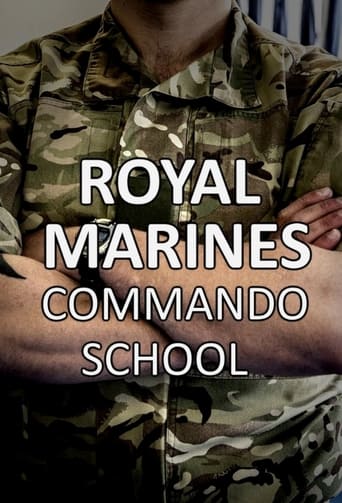
Commando School
Behind the scenes of one of the most arduous basic military training programmes in the world. Each episode focuses on a cross-section of trainees that are either struggling or excelling at the physical and mental challenges the training presents.
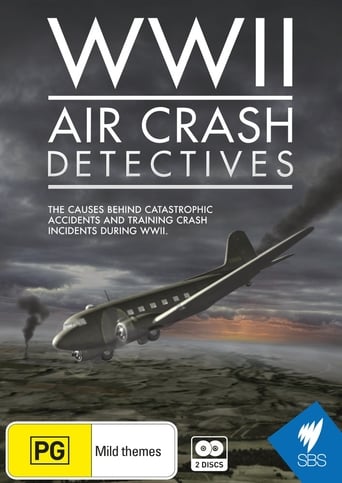
WWII Air Crash Detectives
Garth Barnard has a lifelong passion and unshakeable resolve to investigate how thousands of young Airmen from the Second World War died in catastrophic air accidents and training crashes.
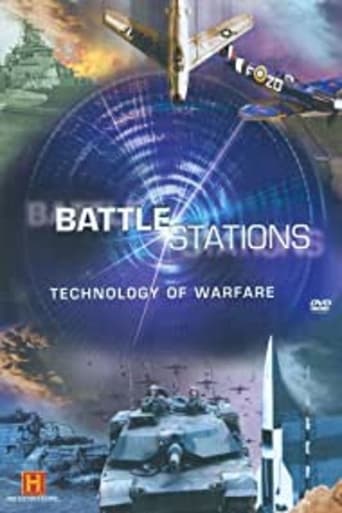
Battle Stations
Battle Stations is a documentary series of 1 hour episodes, which uses archive footage, re-enactments and first-hand accounts from the crews, to follow the machines and technology implemented from the Second World War to the Gulf War in the land, air and sea.
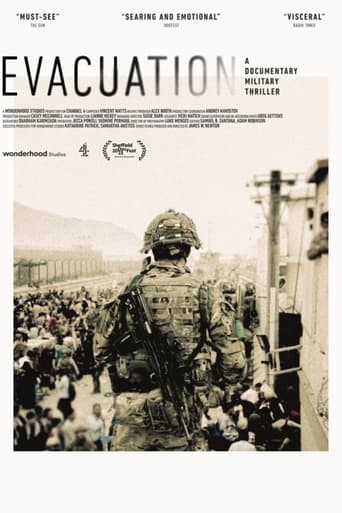
Evacuation
This three-part documentary military thriller provides unprecedented access to the British Ministry of Defence as it recounts the daring operation to evacuate Kabul. It’s an emotional, unflinching series that, for the first time, shows how Britain’s largest airlift since World War II actually played out, minute by minute.
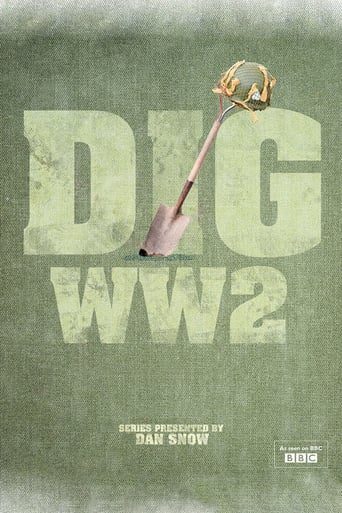
Dig WW2 with Dan Snow
Dan Snow joins military archaelogists as they investigate the former battlegrounds of the Second World War, uncovering little-known stories through excavations and dives across Europe
Related
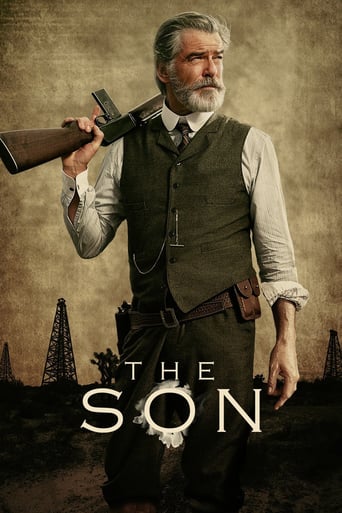
The Son
The multigenerational epic follows two concurrent time periods: One, the story of young Eli McCullough after he is kidnapped and indoctrinated into a tribe of Comanches in 1849. The other, 60 years later, when we see a grown Eli struggle to maintain his family’s cattle empire during the turbulent Bandit Wars of South Texas. Based on Philipp Meyer’s acclaimed novel.
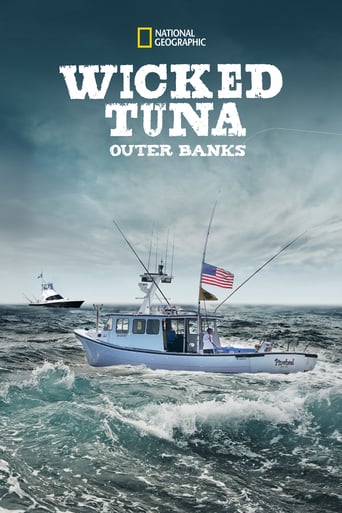
Wicked Tuna: Outer Banks
The long, cold winter has just hit New England, and while the bluefin tuna season has come to an end in Gloucester, Mass., it’s just getting started in the Outer Banks of North Carolina. After a disappointing season, several of Gloucester’s top fishermen head south to try to salvage their finances by fishing for the elusive bluefin tuna in unfamiliar Carolina waters before the experienced locals beat them to the catch. It’s a whole new battlefield and the Northern captains must conquer new styles of fishing, treacherous waters and the wrath of the Outer Banks’ top fishermen. They’re gambling on what could be a massive payday … or a huge financial loss.
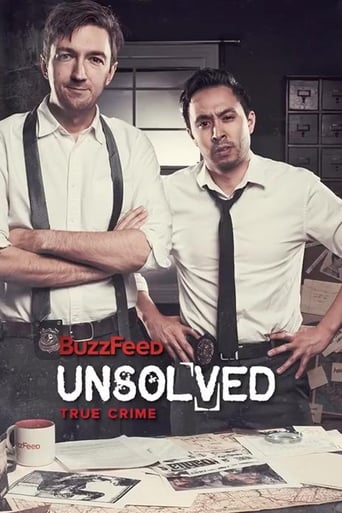
Prime Video
Buzzfeed Unsolved: True Crime
Hosts Ryan & Shane discuss mysteries surrounding notorious unsolved crimes.
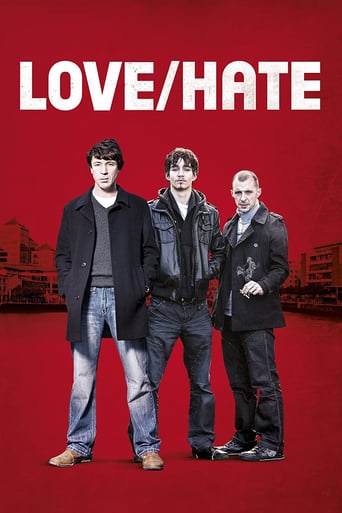
Love/Hate
Modern-day underworld characters Nidge and John Boy wrestle for control of Dublin's illicit drug trade in this forceful crime drama.

Fred: The Show
Fred is back again! And this time, he's here to stay. 'Cause now he's got his VERY. OWN.SHOW!!! For Fred Figglehorn, every day is a new adventure. And no adventure is complete without a mess of confuddling mix-ups and mayhem. Gahhh! Good thing he's got his pal Bertha by his side to help out when things get totally bonkers. Whether he's stuck babysitting Grandma or busy dodging his nemesis, Kevin, Fred's got a whole new bundle of blunders to share with everyone!
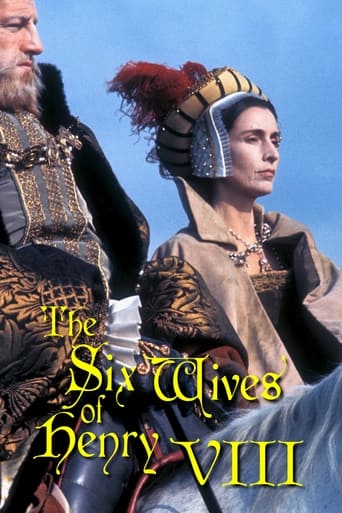
The Six Wives of Henry VIII
Series of television plays written by six different authors. Each play is a lavish dramatization of the trials and tribulations surrounding Henry and his wives. Keith Michell ties the episodes together with his dignified and magnetic performance as the mighty monarch.
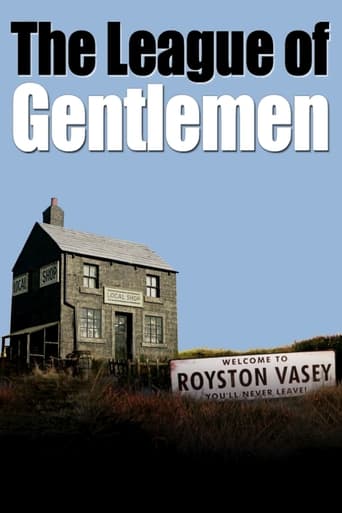
The League of Gentlemen
The League of Gentlemen is a British comedy television series that premiered on BBC Two in 1999. The show is set in Royston Vasey, a fictional town in Northern England based on Bacup, Lancashire. It follows the lives of dozens of bizarre townspeople, most of whom are played by three of the show's four writers—Mark Gatiss, Steve Pemberton, and Reece Shearsmith—who, along with Jeremy Dyson, formed the League of Gentlemen comedy troupe in 1995. The series originally aired for three series from 1999 until 2002 followed by a film in 2005. A three-part revival mini-series was broadcast in December 2017 to celebrate the group's 20th anniversary.
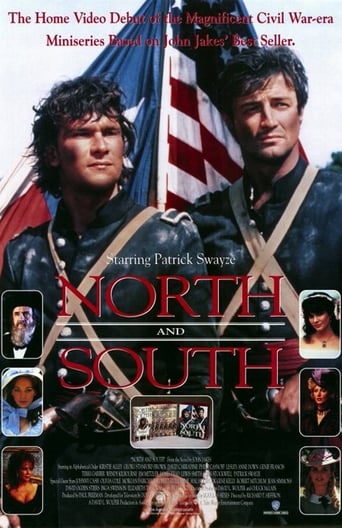
North and South
The story of the enduring friendship between Orry Main of South Carolina and George Hazard of Pennsylvania, who become best friends while attending the United States Military Academy at West Point but later find themselves and their families on opposite sides of the American Civil War.

The Amazing Race
This reality competition sees teams embark on a trek around the world to amazing destinations where they must compete in a series of challenges, some mental and some physical. Only when the tasks are completed will they learn of their next location. Teams who are the farthest behind will gradually be eliminated as the contest progresses, with the first team to arrive at the final destination winning the race and the $1 million prize.
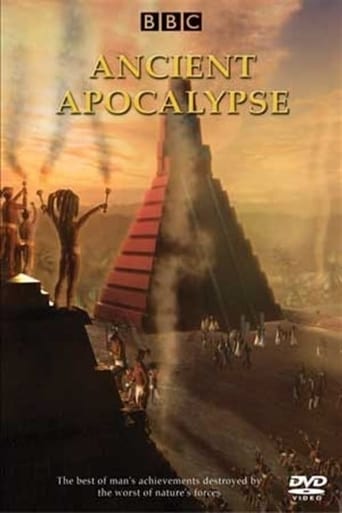
Ancient Apocalypse
Throughout the ages, civilisations have risen up and then disappeared. Ancient Apocalypse seeks to explain how human achievements were destroyed by the forces of nature.
Top Streaming TV Show
#1

Ikaw
November. 12,2021
5.9
#2
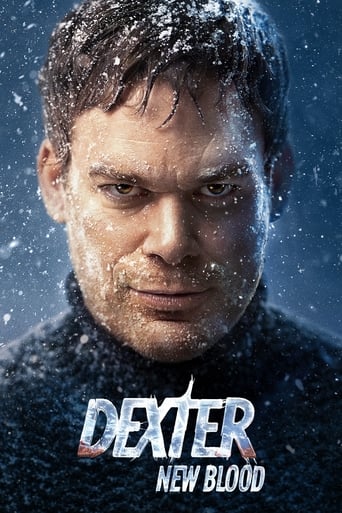
Dexter: New Blood
November. 07,2021
8.1
#3

Money Heist
May. 02,2017
8.4
#4

Chicago Fire
October. 10,2012
8
#5

Emily in Paris
October. 02,2020
6.9
#6
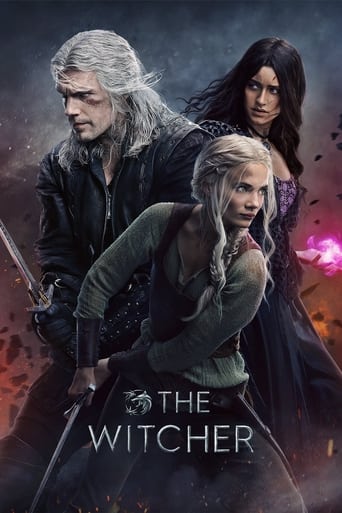
The Witcher
December. 20,2019
8
#7

Yellowstone
June. 20,2018
8.7
#8

Squid Game
September. 17,2021
8
#9

The Bachelorette
September. 23,2015
5.3
#10
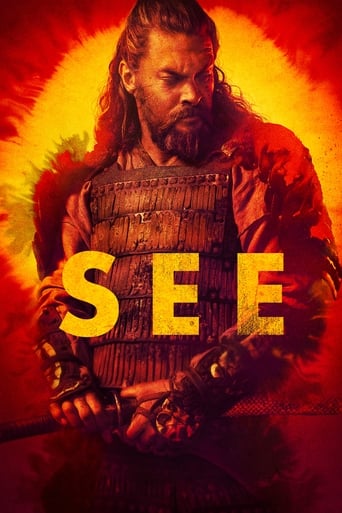
See
November. 01,2019
7.6

